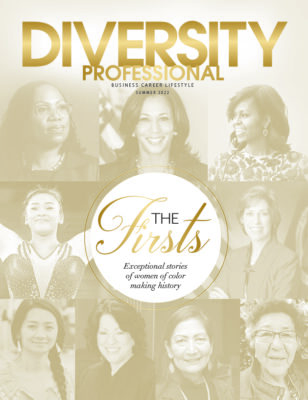Trends Shaping Cultural Sensitivity Training In The Workplace
How organizations are ensuring inclusive language across communications.
Starting with President Kennedy’s Equal Opportunity Executive Order in 1961, which protected federal employees from discrimination, to Title VII of the Civil Rights Act of 1964, which prompted the creation of the equal opportunity statement on job applications, the importance of inclusive language has slowly come into the collective consciousness.
Progress in inclusive language has been made since those laws were enacted, driven by changes in social attitudes. But there’s still much work to be done to make sure our language is free of bias, intended or otherwise. And as companies look for ways to reflect their values around inclusion in everything they do, they are paying closer attention to what they, and their employees, say.
Here’s a breakdown of what companies are doing to make sure their language is inclusive:
Anti-Bias Training
As more research into bias is done, effective programs have been created to combat it in the workplace. Now, nearly every Fortune 500 company offers some form of diversity or anti-bias training. The approaches vary depending on the program, but innovative approaches include InQuest’s gamified Contineo and Cornerstone OnDemand’s microlearning program. The goal is the same: to create a culture of inclusion, starting with the words we use at work. Part of that formula is refining communication skills. That means learning how to incorporate inclusive language through real-time feedback and activities that show what biases sound like. For example, in an exercise called “Just by looking at me”—which was put forth in an inclusion guide from Massachusetts Institute of Technology—a participant might disclose a learning disability and practice requesting colleagues to avoid using the terms dyslexia or ADHD in a cavalier way.
AI Tools for Inclusive Language
For organizations or individuals who don’t have the time or the money for intensive anti-bias training, the Linguistic Society of America, GLAAD (the LGBTQ advocacy group) and the National Center on Disability and Journalism offer great resources for inclusive language including updated guides on what language is appropriate and preferred by various communities.
“If you use terms that are inaccurate—like ‘wheelchair-bound’ or calling an Indigenous person an ‘Indian’—you lose credibility with sources and audiences,” says Rachele Kanigel, editor of The Diversity Style Guide, which helps educate employees on the right language to use, and why even more under-the-radar insensitive terms like elderly or exotic can contribute to creating nondiverse cultures. But remembering all of these guidelines is tough. In response, a new crop of artificial intelligence (AI) tools are helping keep track of ever-evolving best practices around inclusive language. Tools like Writer correct language in the browser, so employees never have to worry about unintentionally being biased or insensitive.
Job Description Anti-Bias Tools
While the equal opportunity statement was the first national push to combat bias in the hiring process at private companies, tools like Textio and TapRecruit have emerged to help address the issue of gendered language in job descriptions. Writer goes even further to address cultural and group sensitivity. These tools aim to target explicitly biased language, like changing the word manhours to person hours or engineer hours. They also weed out implicit bias, which can come in the form of gender-coded language and in words like ninja and aggressive. Words like inspire and collaborate can help to attract a more gender-balanced applicant pool. By addressing these issues at the outset of the hiring process, companies can not only signal to potential hires that diversity and inclusion really matters, they can also help foster a feeling of belonging. This is especially important in industries and companies where minorities are already underrepresented.
Data-Driven Diversity and Inclusion Tools
Good intentions can’t take an organization very far when it comes to D&I. With tools like Ascending, which helps measure and improve diversity, equity and inclusion, organizations can back their plans with data. In the wake of the Black Lives Matter movement, many large companies like Ubisoft and Mondelez have launched D&I initiatives—with fancy microsites to market their commitment. But without data that actually measures the proportion of their workforce drawn from diverse backgrounds and the retention of these employees, they may not have much impact. What Ascending does is allow companies to audit and rebuild their culture through tactical training and specific hiring and retention standards around DEI.
“DEI is the frontier of software, human capital management and HR resources systems,” says Ascending’s Founder and CEO Jeremy Evans-Smith. “At the beginning of “this is a thing,” DEI was considered a luxury at some companies. Now DEI is business critical.”
“If you use terms that are inaccurate—like ‘wheelchairbound’ or calling an Indigenous person an ‘Indian’—you lose credibility with sources and audiences.”









